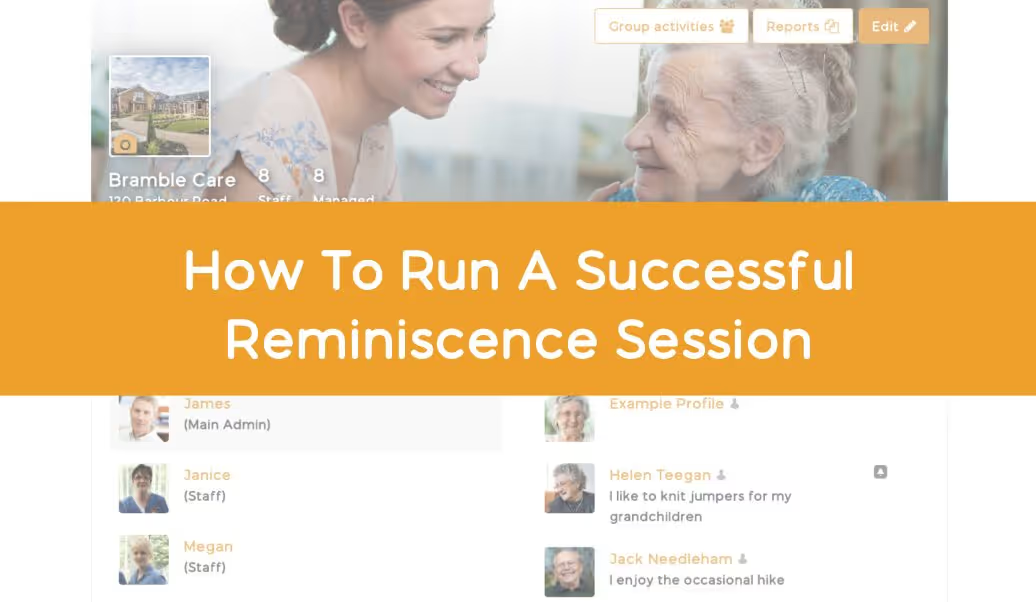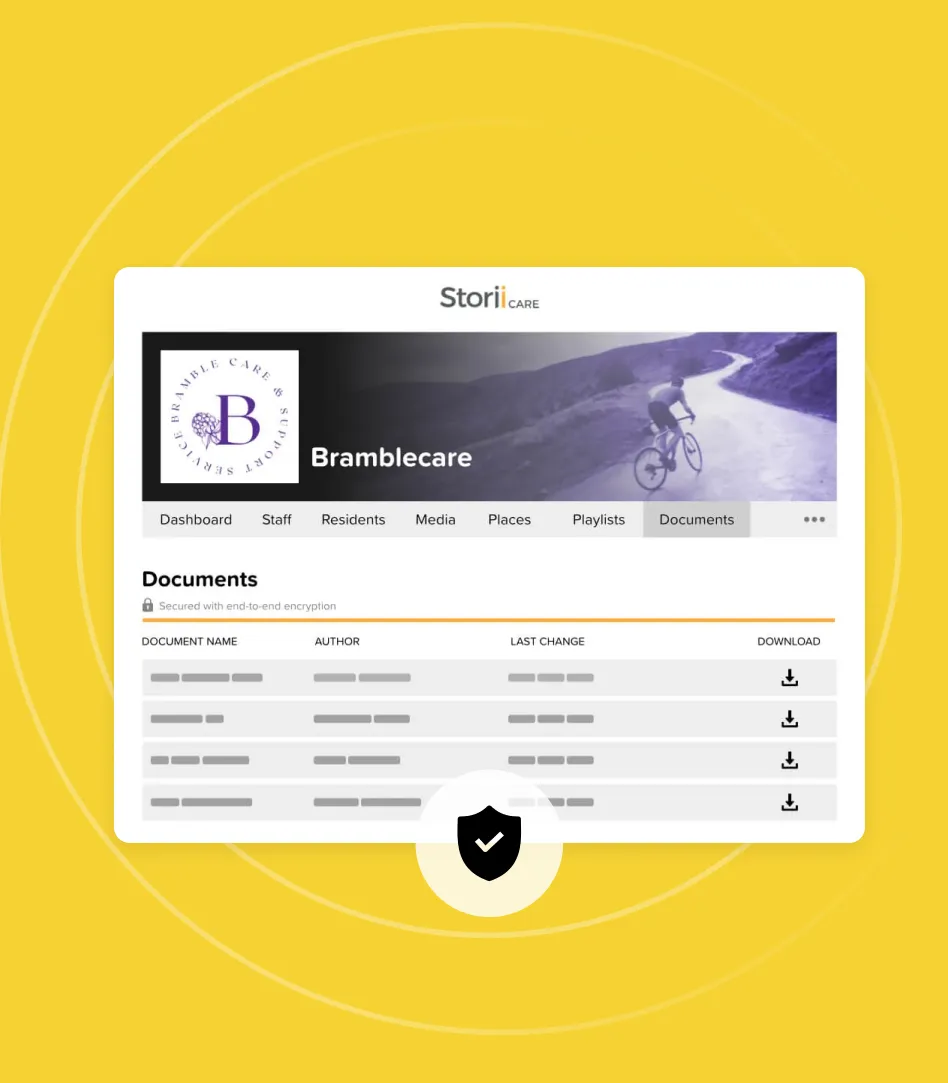3 etapas para realizar uma sessão de reminiscência em grupo
Sessões de reminiscência pode ser fundamental para ajudar os residentes a lembrar e compartilhar suas memórias antigas. Nos últimos vinte anos, houve um aumento significativo no número de atividades de reminiscência realizadas com idosos, particularmente com aqueles que têm demência. As sessões de reminiscência agora se tornaram uma atividade valiosa no setor de cuidados, capacitando os residentes a se comunicarem e se socializarem. Essas sessões oferecem aos residentes uma plataforma para refletir e compartilhar suas experiências de vida em um ambiente favorável.
Escolha um líder de grupo
Antes de iniciar uma sessão de reminiscência, é recomendável que você decida quem será o líder ou facilitador do grupo. O líder indicado ajudará a orientar e incentivar as discussões e a garantir que a sessão ocorra sem problemas. O papel deles é garantir que todos os envolvidos tenham uma experiência agradável e manter os tópicos relevantes para os presentes sempre que possível. A oportunidade deve ser apresentada para que cada pessoa contribua, mas ninguém deve ser pressionado a responder. É importante lembrar que as pessoas podem ficar nervosas em participar e podem não saber o que se espera delas, portanto, não as force a fazer nada sobre o qual não se sintam à vontade para falar.
Escolha um tema
É importante escolher um tema apropriado com o qual o maior número possível de pessoas na sessão de grupo possa se identificar. Depois que um tema for determinado, você poderá pedir a cada membro do grupo que compartilhe suas ideias sobre o assunto.
Aqui estão algumas ideias de temas a serem explorados:
- Eventos históricos
- Filmes
- Jogos e passatempos infantis
- Vida profissional
- Vida familiar e avós
- Experiências escolares
- Cultura pop desde a juventude - a era de ouro de Hollywood, etc.
- Tempo de guerra, serviço militar (pode não ser adequado para todos)
Use gatilhos multissensoriais
Depois de escolher um tema adequado, o próximo fator para realizar uma sessão de reminiscência bem-sucedida é usar recursos sensoriais apropriados para estimular o processo de reminiscência. Objetos familiares aos membros do grupo são importantes, portanto, é uma boa ideia experimentar uma variedade de estimulantes sensoriais diferentes para descobrir qual funciona melhor para cada membro.
Aqui estão algumas boas fontes de recursos sensoriais que podem ajudar a tornar as sessões de reminiscência variadas e agradáveis:
• Auxílios visuais são importantes - instruções como fotografias antigas ou vídeos, mapas, filmes antigos, bandeiras do mundo, símbolos, pôsteres ou pinturas. Ligado História do iCare há uma pasta de conteúdo selecionado adequada para fins específicos, ideal para sessões de reminiscência. É acessível à equipe de atendimento e é atualizado semanalmente. Saiba mais aqui.
• Os sons podem ser um aviso poderoso se usados corretamente. Sons como música familiar e desconhecida, ruídos de pássaros e animais, clima (tempestades, vento, chuva), sons de trens e navios, ruídos de máquinas podem ser usados para provocar nostalgia em um público mais velho.
• Os sabores também são uma ótima ajuda sensorial. Comida, bebida, doces, remédios, culinária e panificação, alimentos incomuns ou estrangeiros para experimentar. Se achar que seria adequado, pergunte se eles se lembram de alguma receita antiga da infância que você possa saborear com eles.
• Vários aromas podem ajudar a despertar memórias antigas. Cheiros como maquiagem, perfume, agentes de limpeza, remédios, naftalina, ervas, especiarias, cheiros culinários, flores, árvores e cheiros do campo, carvão e queima de madeira são ótimos exemplos.
• O toque também pode ser usado para estimular uma resposta. Você pode usar texturas contrastantes, temperaturas contrastantes (quentes e frias), tecidos diferentes, toque humano, ingredientes alimentares, animais para acariciar, roupas para manusear e dobrar.




.png)
.png)
.png)










